We didn’t mention our hotel yesterday so we’ll have to describe it today. The hotel was right outside of the south gate to Itchan-Kala Fortress. It was more of a complex than a traditional hotel. There were multiple buildings, each like its own hotel with a manned front desk, etc. and we were in the newest building, Building 5.
Each building was surrounded by pave stone walkways many with metal trellis “tunnels”, green areas filled with roses (did we mention that roses are grown everywhere in Uzbekistan? We saw them every single day), and lovely pathways to tapchans tucked in here and there setup for tea service.


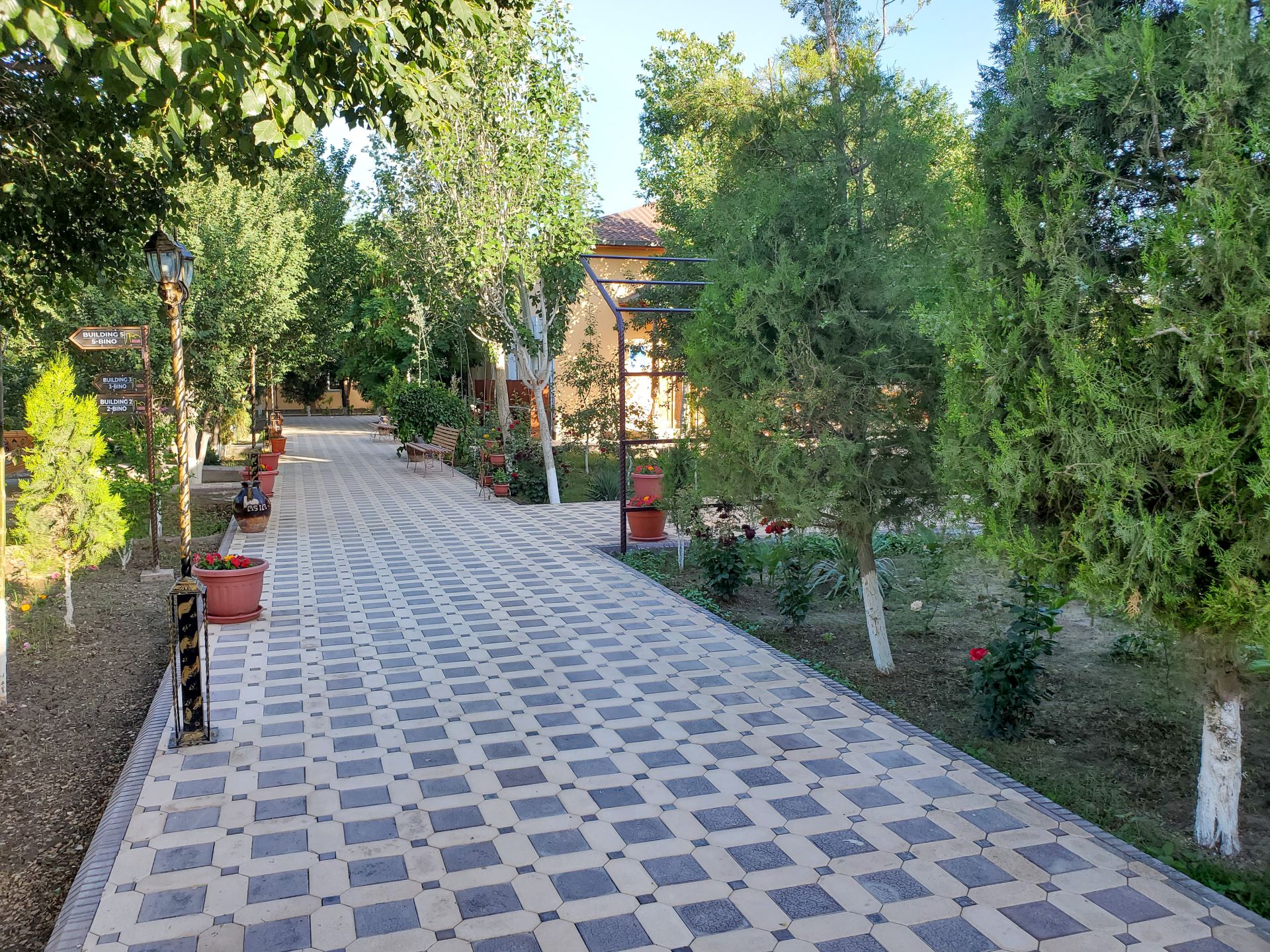
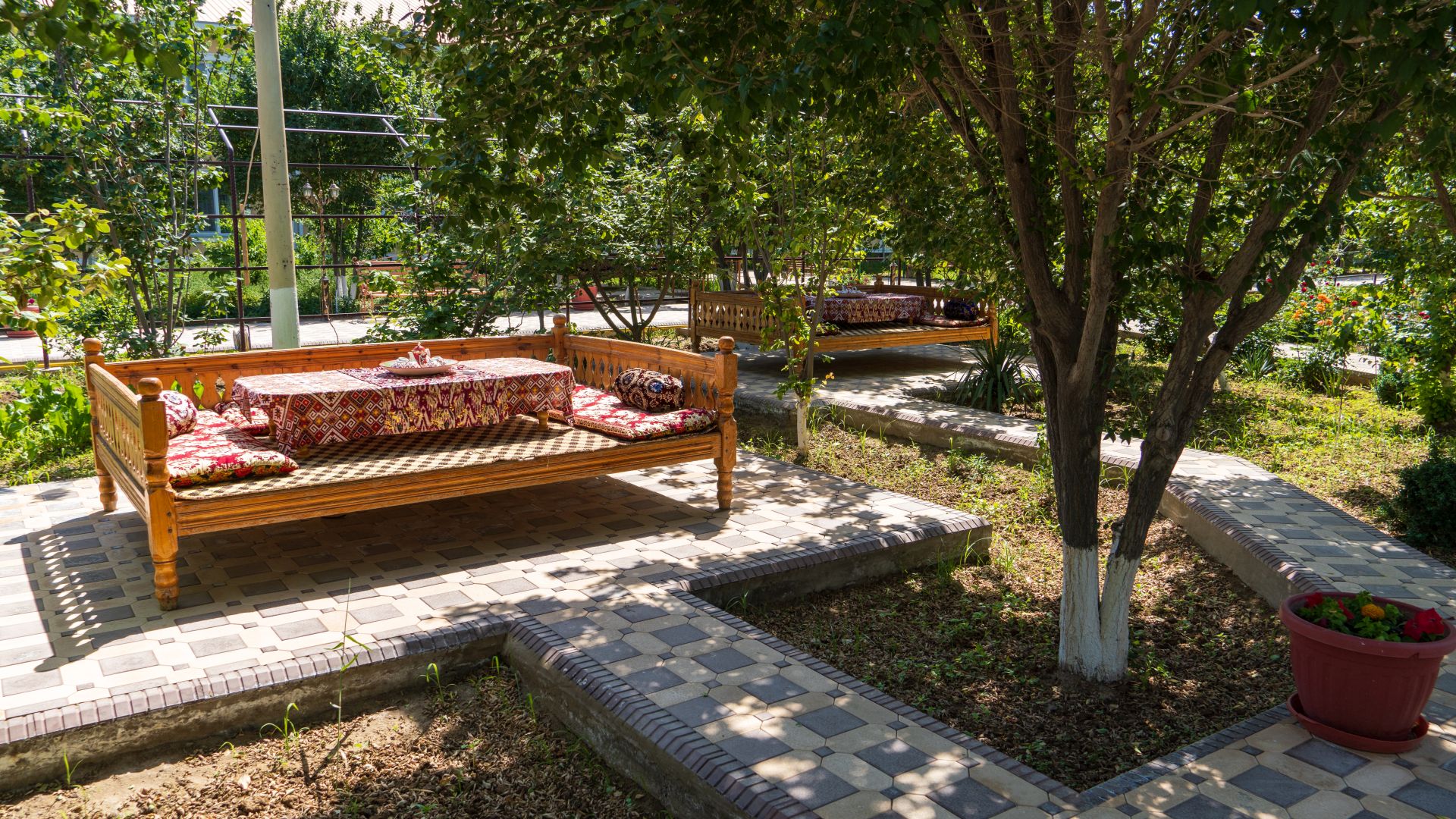
While we didn’t request a fancy room, we sure got one! We were assigned a two room suite, complete with a spacious living room and an equally spacious bedroom, both with fancy light fixtures.



You might wonder why there are two single beds rather than a shared bed. Don’t sweat it – there are no marital issues. We discovered long ago how glorious it is to have your own bed while traveling, particularly when you’re not sure how small the shared bed might be! So this is now a standard request.
Today there were no buses and no driving, with the hotel being right outside the gates. The day was fully spent as a walking tour of Itchan-Kala (also spelled Ichan Qa’la) in the heart of Khiva. (Khiva was important in that it was the last oasis along the Silk Road where caravans could rest-up / stock up before crossing the desert to Iran.)
Rather than walking to the close south gate, which sat across from our hotel complex (previously seen in Day 5’s pictures from the previous evening’s walk to dinner), we walked around the outer wall to the west gate, which is the more traditional tourist’s entrance. Walking around the outer wall really gave perspective on the size of the walls. To give numbers to them, the clay walls are up to 10 m (30-ft) high and 5 to 6 m (15-18-ft) thick, the oldest portions of which date back to the 5th century.

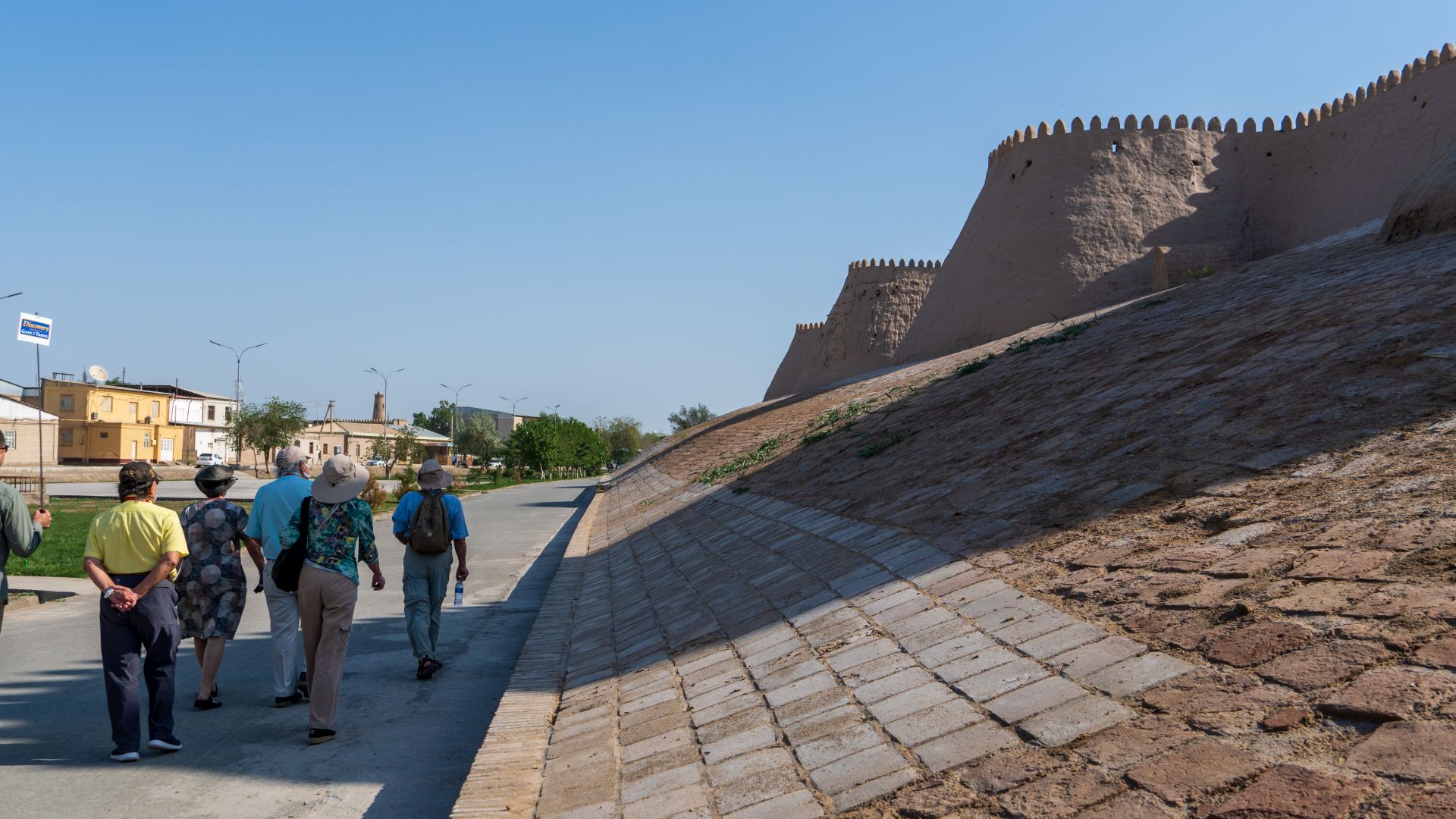
One interesting tidbit we discovered at the entrance… while we had seen “police” around quite a bit previously, today was the first time we really noted a distinct difference in types of police, and actually recognized that they had “tourist police” as well as the everyday officers. The tourist police are more of a state police, rather than the individual town or city that you are in.

We did feel better knowing that we had a trusted and faithful friend in Uzbekistan to ensure the safety of our journey. We jest because that is written on the side of the building, but in all honesty, we felt incredibly safe and welcomed in Uzbekistan. It is a very, very low crime rate country, and we would feel more nervous in downtown Kansas City or St. Louis (or pick any American city) than we ever did at any time in Uzbekistan.
Itchan-Kala is 26 hectares (64 acres), having over 50 ancient monuments/structures and 250 dwellings within its walls. So walking / seeing it all is… a challenge.

Or if you want to see the nitty-gritty from google maps…

Our first stop was the Kalta Minor Minaret. This was not the typical minaret we’d been seeing, rather it was a huge minaret that was more squat (fat) and short than tall and skinny. It was quite dazzling, as it was covered in blue tile bands making it probably the most unique minaret we saw.
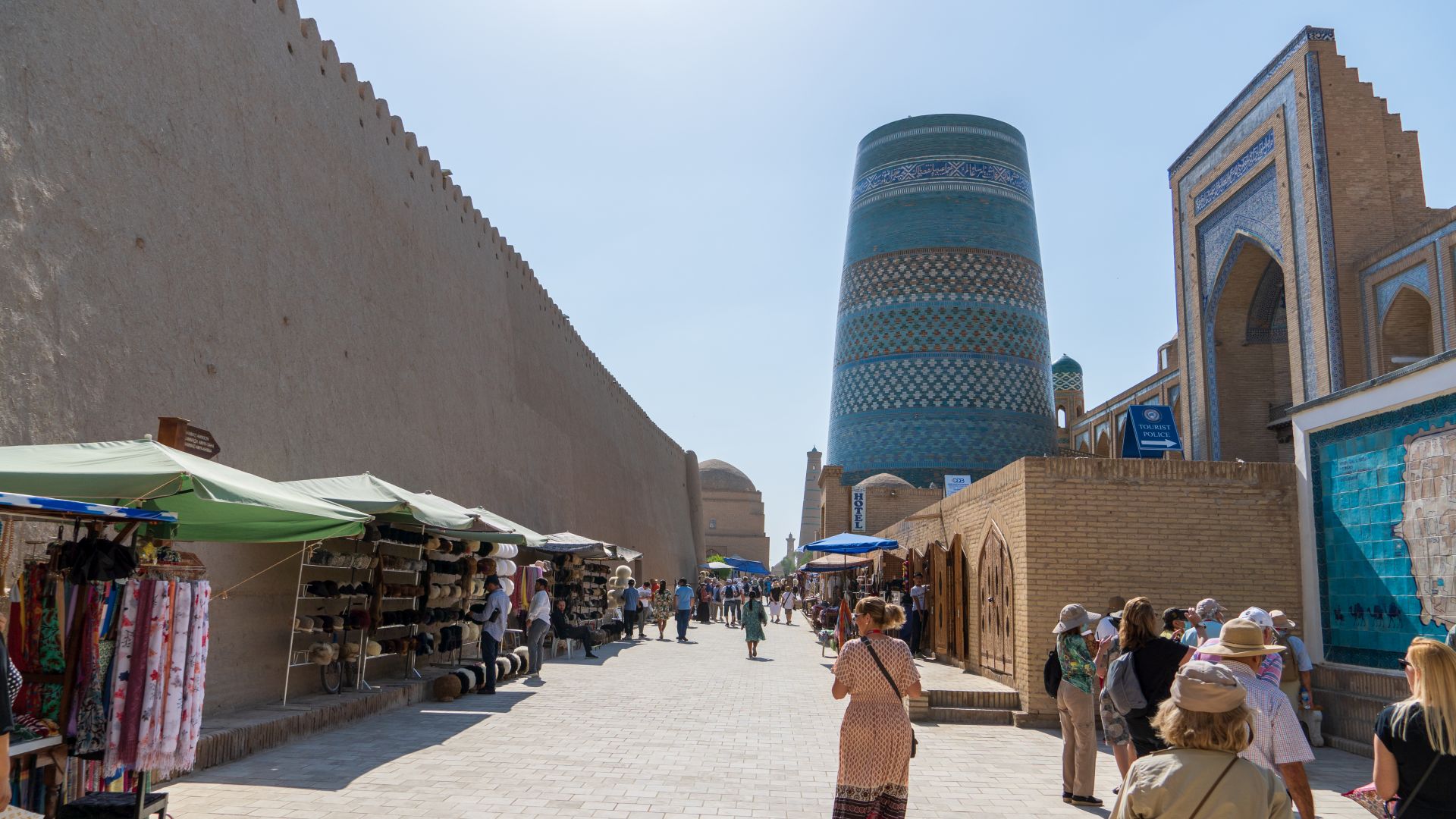

Adjacent to Kalta Minor, was the Mohammed Amin Khan Madrassah, which has been converted to a functioning hotel.
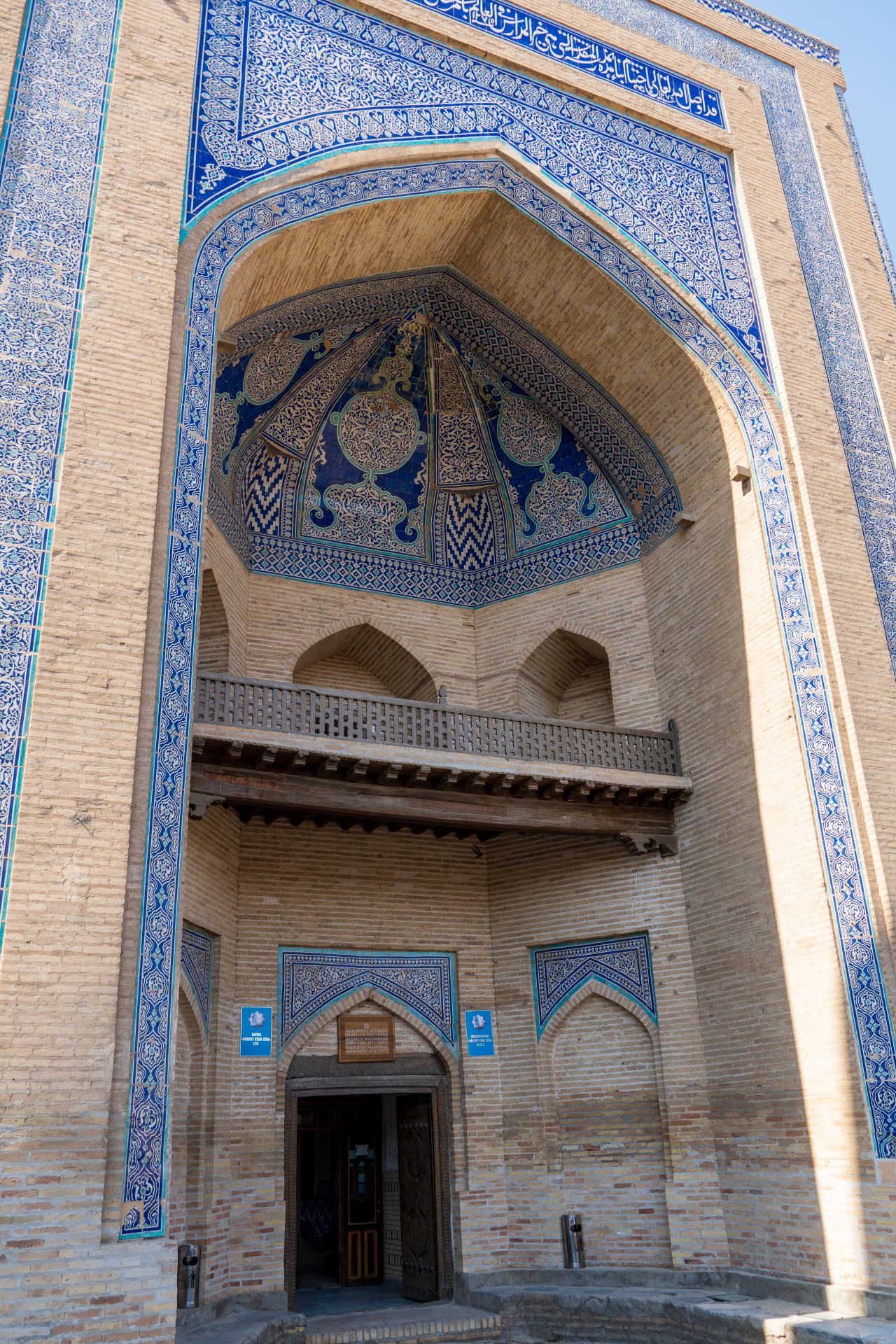

This was a larger madrasah that had had many students, and thus the interior courtyard was huge. An elevated stage looking area added to the unique look of this courtyard.


We then moved on to the following locations (it can be maze like within the inner city, so we’ll just list the various places we visited and then move on to the photos, with possibly some additional tidbit information sprinkled in here or there)… we visited: the Kunya Ark Palace, the Muhammad Rakhimkhan Madrasah, the Grand Djuma Mosque, the Tosh Khauli (also written Tosh-Hovli) Palace, the Pakhlavan Mahmoud Mausoleum, the Harem in Tosh Hovli, and the Islam Khodja Madrasah & Minaret.
Here are various views from around the city:

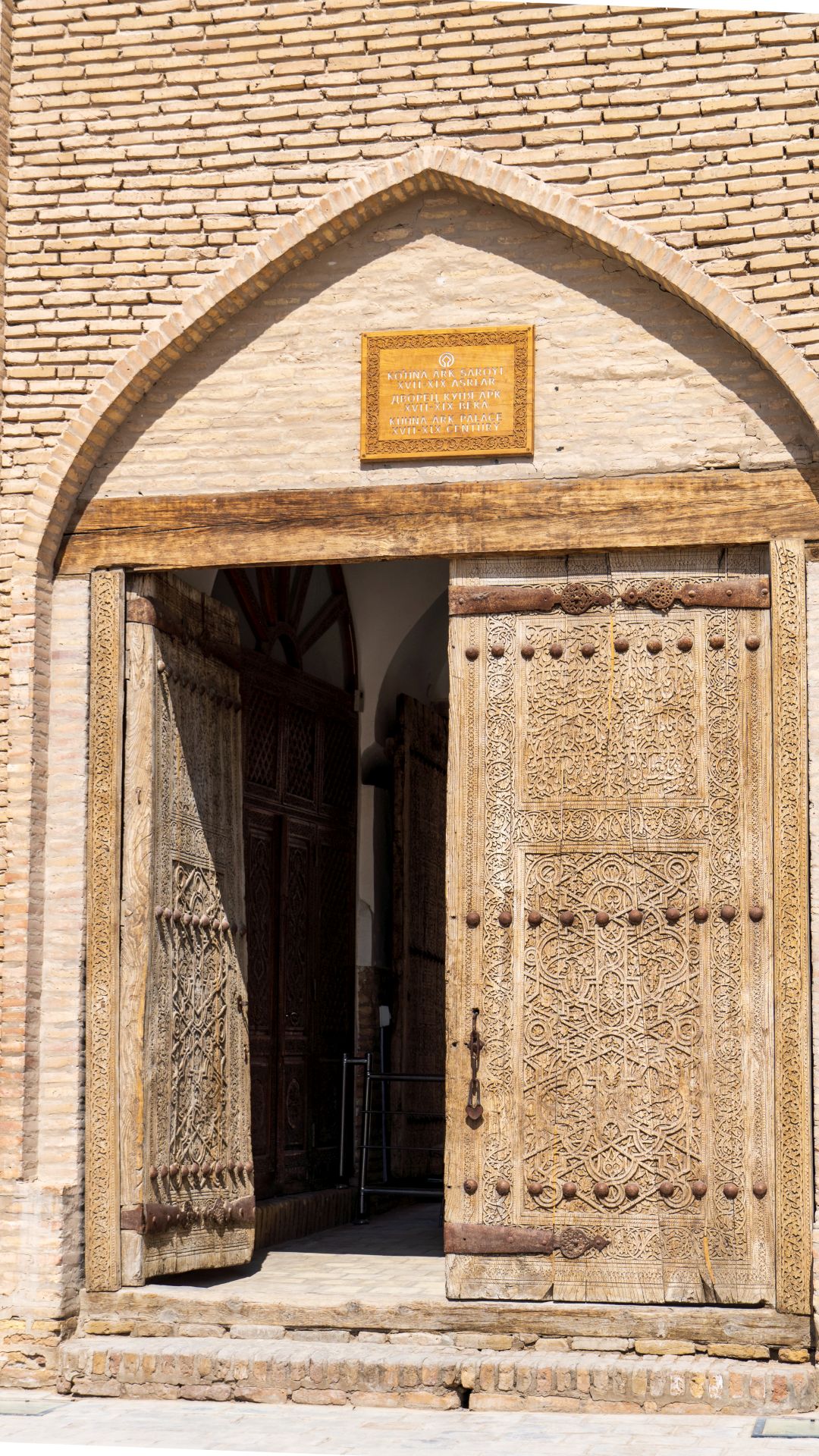

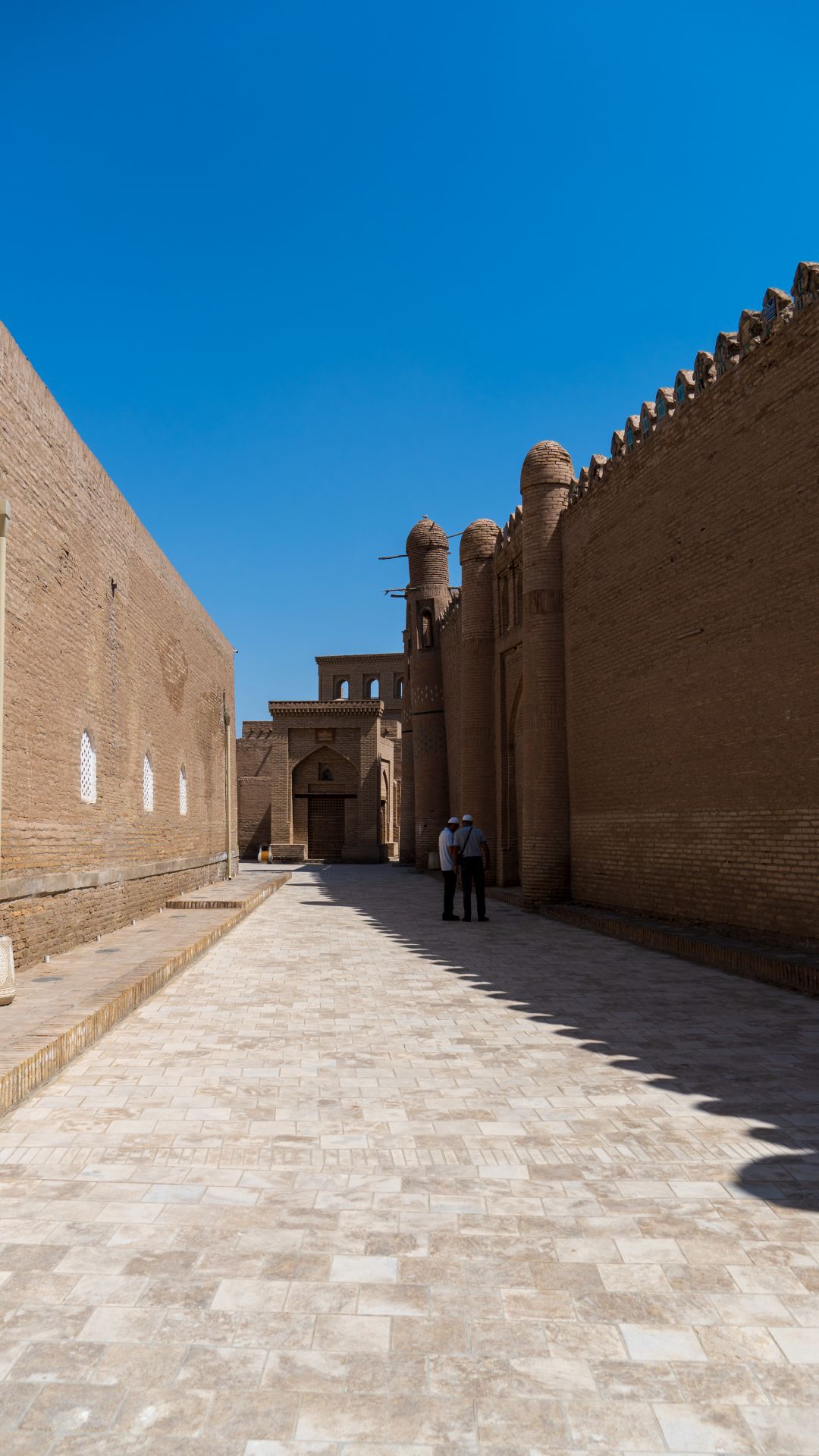


There were many madrasas within the walls, and of course they have since been re-purposed. Here is an example of one that was converted into a restaurant, as evidenced by the sign above the door / just below the balcony area.

The following photos are from within the Palace.



Many of the courtyards for these areas had larger elevated circular platforms.

These platforms were utilized for guest dignitaries, many of whom would not necessarily feel comfortable staying/sleeping in a building, so these were platforms that allowed them to erect their personal yurt with which they could then stay in.
There were several of these receiving areas and courtyards, here is another even grander:

And in this courtyard, there were two platforms, one of which had an example yurt set-up to show what it would look like with a visitor staying in the palace.

Below is a picture of the courtyard of the harem. While the term harem generally elicits thoughts of a large group of concubines, often harem just meant the women’s quarters. Harem comes from the Islamic word haram, which means forbidden. Thus it was forbidden for any man save the king (or eunuch servants) to be present in the women’s quarters, or harem.

For this particular harem, there were four (4) doors on the right. Each of these doors was to a queen’s quarters. (Yes, there were four queens.) Each queen was allowed ten (10) maidservants… who were subsequently also the concubines of the King.
So to the left, were the four separate chambers for the concubines, each grouping of ten serving a different queen. And the king was the only man allowed within this courtyard and its doors. In the infamous words of Mel Brooks… “it’s good to be the King”.
Also interestingly, there were little “pegs” in the walls outside of the various concubine chambers, where if the King was in audience with a concubine, then he’d hang a rope or sash on the hook to signify “the King’s in here”.
Here is a picture of one of the queen’s chamber:

One of the most unique and fascinating places we visited today was the 10th century Grand Djuma Mosque. The mosque was filled with pillars (as seen below), most of which have been replaced over the centuries, but 3 of the pillars were still original to the 10th century.
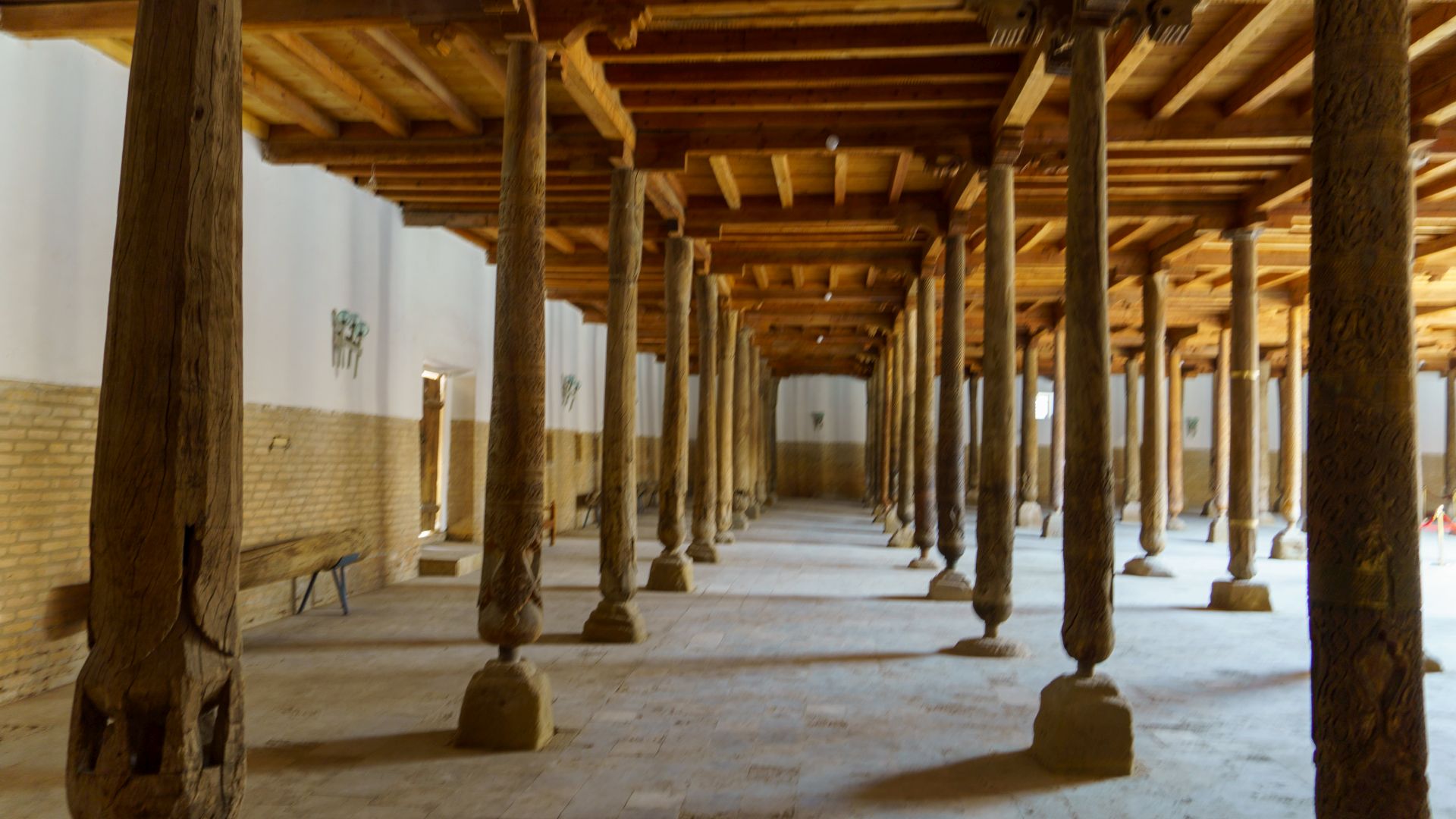

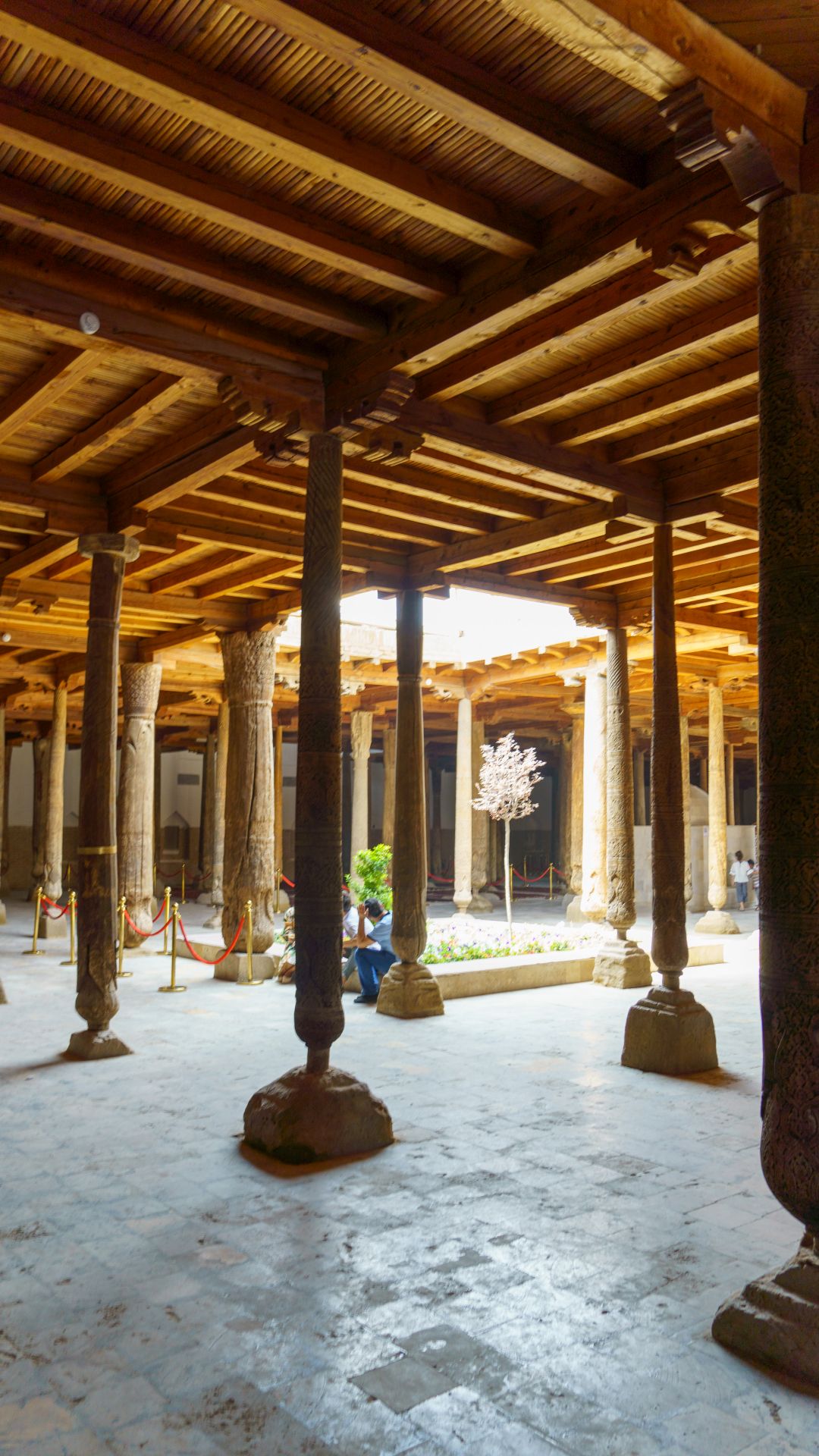
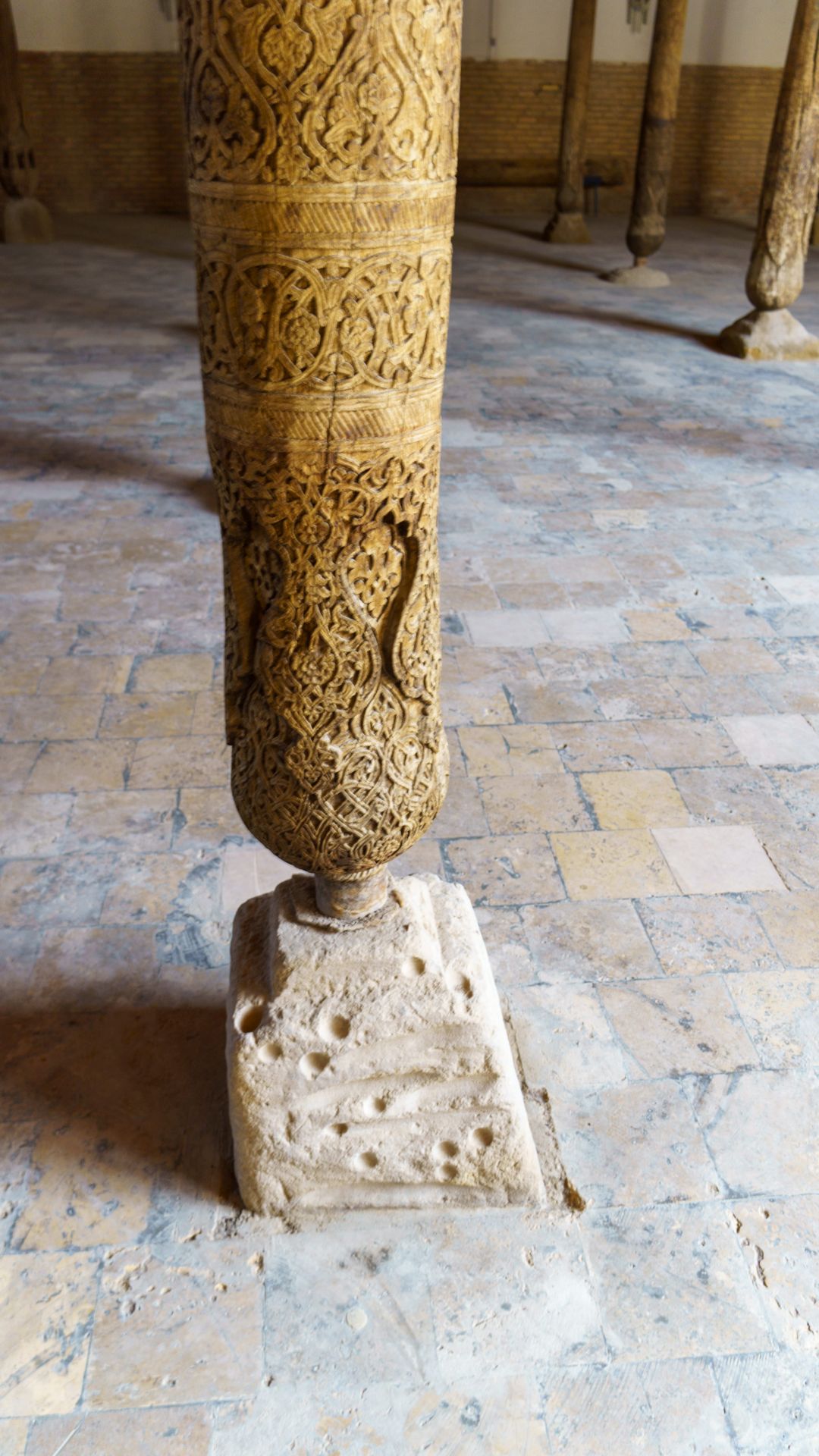
Finally, below is a photo within one of the mausoleum’s (okay, we must admit, we don’t remember exactly who’s… there was a LOT of blue tile, everywhere, in every building, inside, as well as out… sooo it did somewhat run together.)

Besides the ancient monuments and structures, there were also sprinkled in some interesting bronze statuary such as:

and

We wrapped up with one of the most refreshing courtyards (yea, I know, we’ve seen a lot of those as well), that was just… well… refreshing. Nice simple trees, a very ornate well… very picturesque.

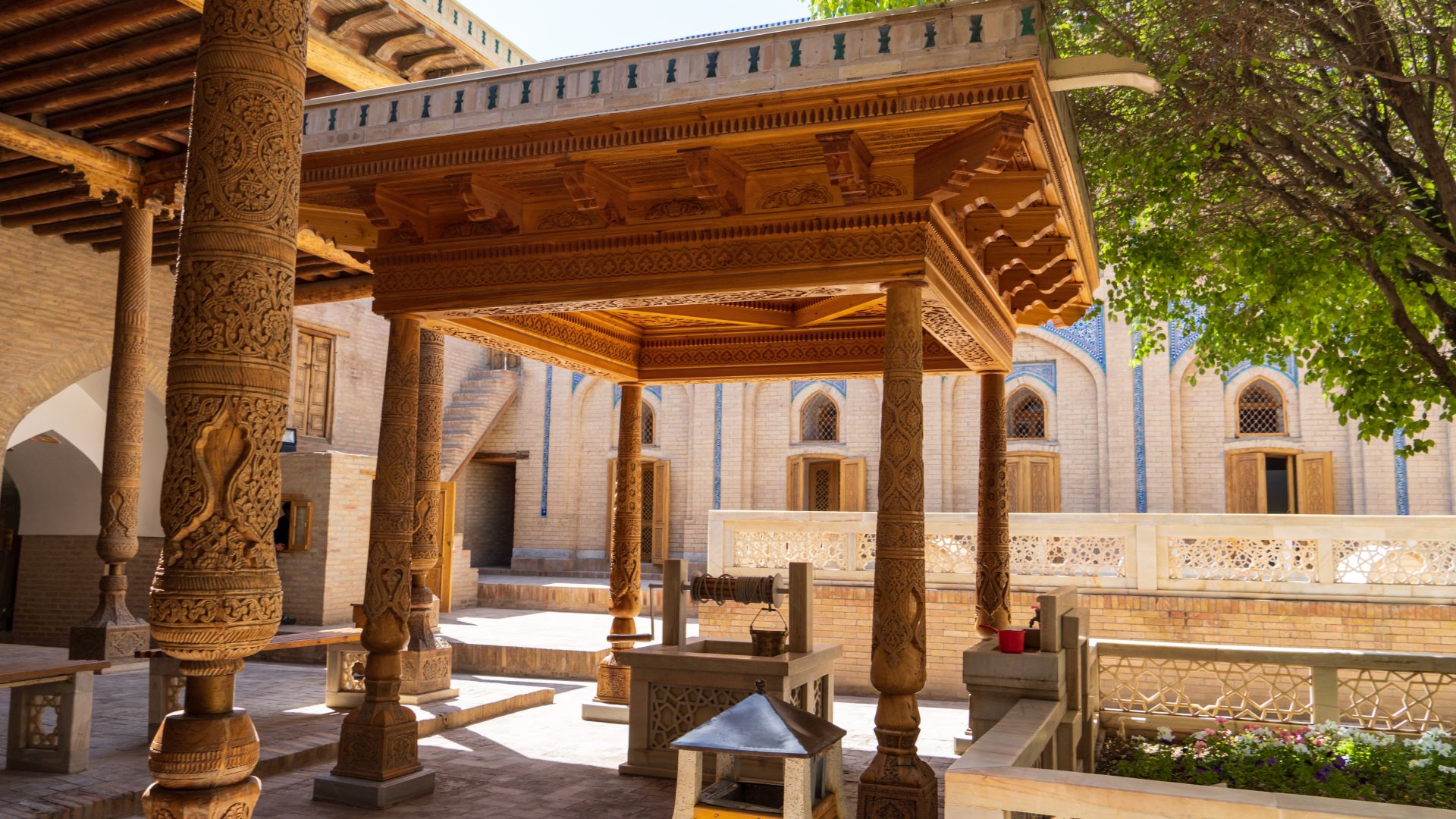
We returned to the hotel to freshen up and rest a bit before dinner. We walked back into the walled city and had dinner on the roof of a quaint restaurant.
As the sun went down, there was a very nice breeze, and they had live musicians on the rooftop with us, and we were enjoying it with good friends which made for a fantastic end to the day.
This was the restaurant:

And with bellies full, we walked back to the hotel in the dark. Tomorrow’s the grueling road trip to Bukhara. Joy.

Leave a reply